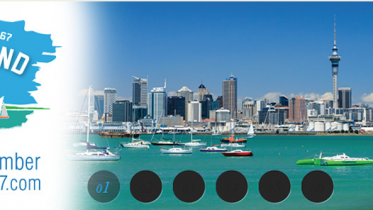Figure linked to Dockers trademark acknowledged as a famous and well-known mark in Chile
- 10 February 2014
The Intellectual Property Tribunal of Chile has refused to register the trademark, by accepting the opposition filed by LEVI STRAUSS & CO.
Based on the fame and renown of the DOCKERS brand and its label, this company has become worldwide famous.
It is known that the figure of the two wings and between them, an anchor, is by itself a mark that deserves protection and treatment befitting a well-known sign to distinguish goods in class 25.
This is particularly relevant, not only to the opponent and third parties whose interests may be affected, but also accounts for the effective implementation of the criteria contained in “Joint Recommendation Concerning Provisions on the Protection of Well-Known Marks” in Chile.
The transnational firm and global leader LEVI STRAUSS & CO., on October 10, 2013, appealed against the first instant decision issued by the National Institute of Industrial Property, which agreed to register the mark “404” to distinguish “all goods in the class” 25.
In first instance, the label applied and accepted for registration is the following:
The first instant decision accepted for registration the label “404”, denied the famous and well-known character of the figurative sign “Wings and Anchor”, (LEVIS STRAUSS property) and stated that the mark applied for registration had a graphical and figurative configuration.
This gave a rise to a separate sign possessing a distinct concept distinguishable in the market.
Against this decision, the opponent filed an appeal arguing that the Chile Trademark Office appreciated incorrectly the attributes of fame and notoriety (well-known) of the trademark being opposed, contravening international guidelines accepted by national legislation. In particular the guidelines contained in the Joint Recommendation published by WIPO about Famous and Well-Known Marks.
In this regard, the opponent argued that the high similarity in the figurative elements means a degree of similarity between these marks that certainly mislead consumers.
Addressing this argument, the TPI ruled by accepting the opposition and denying the registration of the mark “404”, doing an exercise that reflects an application of current international criteria on the protection of internationally well-known marks. In this respect, first the TPI recognizes the fame and notoriety (well-known) of the figurative mark consisting of two wings and an anchor as LEVIS STRAUSS exclusivity.
From this established fact, it made a graphic and phonetic comparison of opposing privileges, reaching the conviction that the word element “404”, fails to give distinctiveness to the mixed sign, since its figurative element has high similarity to the famous figurative mark LEVIS STRAUSS formed by two wings and an anchor.
This resolution allows us to conclude that the fame of the figurative mark linked to DOCKERS also influenced the way in which this Tribunal appreciated graphic, visual and phonetic features of the opposing marks, attenuating the overall appreciation of the mark applied for, by the fact of including in its design a figure that is indeed very similar to the figurative sign consisting of the two wings and the anchor (LEVIS STRAUSS property).
This means, that the standard for examining the distinctiveness of a mark applied for registration rises considerably if the opponent is a famous and well-known mark to be protected, provided that such fame is being sufficiently accredited according to internationally validated principles.
In addition, the point made above is particularly relevant considering that the TPI has tended to assess the similarities between marks primarily from its word element, which in many cases is the main element of the trademarks, according to this Tribunal.
However, in this particular case, the fame and notoriety (well-known) of the figurative element of LEVIS STRAUSS’ mark meant that the Tribunal applied a different approach and contrary to what is generally observed, evaluating the distinctiveness of the 404 mark depending on the prominent figure inserted into the logo.
While from this judgment it is not possible to assert that, as a rule, the most prominent figure within the label is the main element of the mark, for the Tribunal; it may be concluded that confronted with very famous and well-known figurative signs, on Chile and Abroad, as is the case with the mark of the two wings and an anchor linked to DOCKERS, the Tribunal will focus its examination on the figurative element over the word element.






